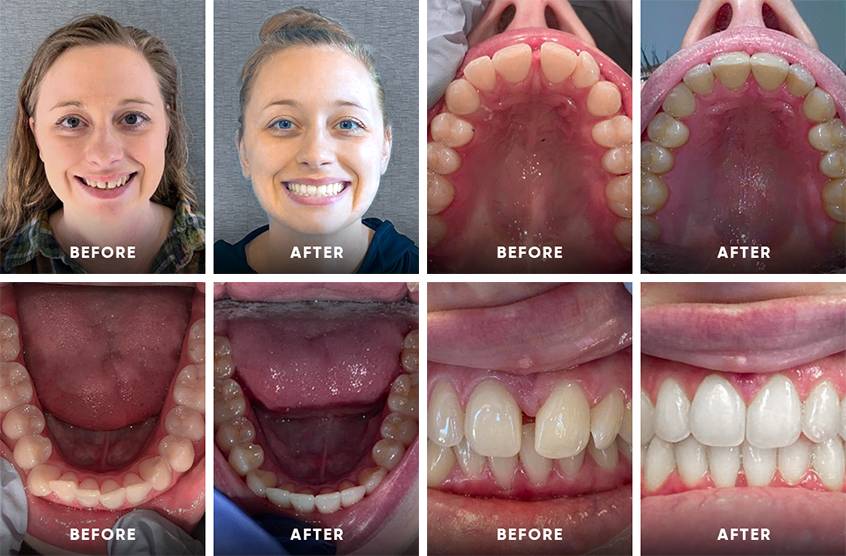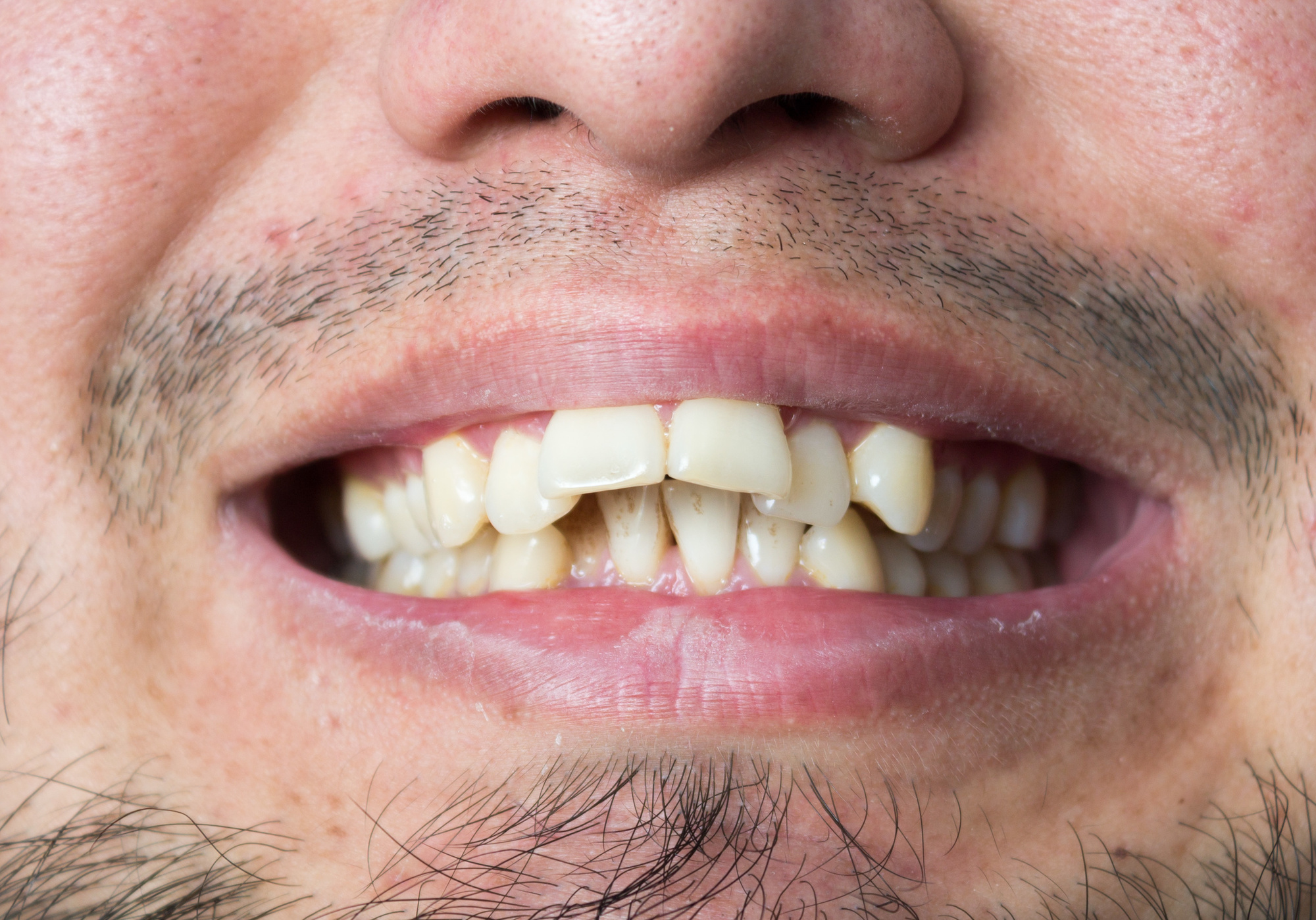Invisalign vs. Traditional Braces: Which Choice Is Right for You?
When considering orthodontic therapy, the selection in between Invisalign and standard braces presents numerous vital variables that warrant cautious evaluation. Invisalign offers a very discreet option with removable aligners, while traditional dental braces supply a more noticeable yet reliable option for severe imbalance.
Introduction of Treatment Alternatives

In comparison, conventional dental braces include metal brackets and cords that are bonded to the teeth. This technique uses continuous pressure with time to achieve positioning. While reliable for intricate orthodontic issues, standard dental braces require routine brows through for adjustments and can present obstacles in maintaining oral hygiene because of the difficulty of cleaning up about wires and brackets.
Both choices have their qualities, and the choice frequently depends upon certain oral problems, way of living preferences, and patient compliance. Eventually, seeking advice from an orthodontic specialist is crucial for identifying the most suitable treatment plan tailored to individual needs. Understanding the nuances of each option can considerably influence the overall success of orthodontic therapy.
Visual Factors To Consider
A substantial variable affecting the selection in between Invisalign and traditional braces is the aesthetic appeal each therapy supplies. Invisalign aligners are crafted from clear plastic, making them basically unseen when put on. This very discreet appearance is particularly appealing to grownups and young adults who might really feel uneasy regarding their orthodontic treatment. The capacity to preserve a natural smile throughout the alignment procedure can substantially boost the patient's confidence in specialist and social setups.
On the other hand, standard braces are composed of metal braces and wires, which can be extra obvious. While advancements in orthodontic modern technology have led to the advancement of smaller brackets and tinted elastics, standard dental braces still preserve an even more noticeable account. For some individuals, the presence of braces might deter them from looking for necessary therapy.
Ultimately, the option between Invisalign and standard dental braces may depend upon individual preferences regarding visual appeals. People who focus on discretion often favor Invisalign, while those that are less concerned regarding presence may go with typical braces. Comprehending the visual implications of each choice is crucial for making a notified choice that straightens with one's lifestyle and choices.
Convenience and Convenience

In terms of convenience, Invisalign aligners are detachable, making it possible for individuals to enjoy their favorite foods without constraint and keep ideal oral health. Brushing and flossing are simplified, as the aligners can be look what i found obtained throughout these routines, whereas traditional dental braces need careful steering around brackets and wires.
Additionally, Invisalign's dynamic system enables less orthodontic sees. Individuals generally he has a good point obtain several sets of aligners at as soon as, which can improve the therapy process and reduce time invested in the orthodontist's chair. In contrast, standard braces demand regular modifications, making them less convenient for those with active routines. Invisalign. In general, the convenience and comfort of Invisalign make it an appealing selection for lots of individuals looking for orthodontic treatment.
Therapy Duration and Performance
While both Invisalign and conventional dental braces are efficient in dealing with dental misalignments, the period of therapy can vary considerably in between the 2 options. Normally, Invisalign therapy can take anywhere from 12 to 18 months, depending on the complexity of the situation. The clear aligners function by progressively shifting teeth into their preferred placements, and normal follow-ups with an orthodontist help guarantee progression stays on course.
In contrast, traditional braces typically need a longer dedication, generally varying from 18 months to 3 years. This results from their set nature and the usage of braces and cords, which can be more effective for severe imbalances and complex cases (Invisalign). The therapy performance of typical dental braces is well-documented, as they enable for exact adjustments and greater control over tooth activity
Inevitably, the selection in between Invisalign and standard braces may rest on both the awaited therapy period and the particular dental issues handy. Consulting with an orthodontist is critical, as Your Domain Name they can give customized suggestions based on specific requirements, making sure the selected method straightens with wanted durations and results.
Expense Comparison and Insurance Options
Price plays a considerable role in the decision-making procedure for individuals considering orthodontic therapy, whether going with Invisalign or traditional dental braces. Generally, the price of Invisalign varieties from $3,000 to $8,000, while conventional dental braces usually cost in between $2,000 and $6,000. Elements affecting these expenses consist of the intricacy of the case, the period of treatment, and geographical area.
Insurance insurance coverage can substantially impact out-of-pocket expenditures. Many oral insurance strategies offer partial insurance coverage for orthodontic treatments, yet the specifics can vary extensively. It is essential for people to examine their insurance plan to determine the degree of coverage for either choice. Usually, standard braces may be extra frequently covered by insurance coverage strategies compared to Invisalign, which some insurers categorize as an aesthetic procedure.
Additionally, a number of orthodontic methods supply adaptable layaway plan, making both treatment choices a lot more obtainable. People should ask about potential financing options and discount rates for in advance repayments. Examining the overall expense, including insurance coverage benefits and repayment plans, is essential for making an informed decision that straightens with both visual choices and spending plan factors to consider.

Conclusion
In summary, the selection in between Invisalign and typical dental braces pivots on numerous aspects, including aesthetic preferences, convenience, therapy period, and expense. Invisalign provides a discreet, removable alternative that promotes dental hygiene and dietary flexibility, while typical dental braces may be preferable for intricate oral problems and frequently come at a reduced rate point. Ultimately, consultation with an orthodontist is important to analyze private situations and determine one of the most proper treatment alternative for accomplishing optimal oral positioning.
When considering orthodontic therapy, the option in between Invisalign and standard braces offers a number of vital aspects that merit mindful assessment.Contrasting Invisalign and conventional dental braces exposes distinctive treatment alternatives for orthodontic modification.While both Invisalign and traditional dental braces are effective in remedying dental misalignments, the period of treatment can differ considerably in between the two choices.Price plays a considerable duty in the decision-making process for people considering orthodontic treatment, whether deciding for Invisalign or conventional dental braces.In recap, the choice in between Invisalign and traditional braces pivots on numerous elements, consisting of visual preferences, comfort, therapy period, and cost.
Comments on “What to Anticipate During Your Invisalign Journey: A Comprehensive Introduction”